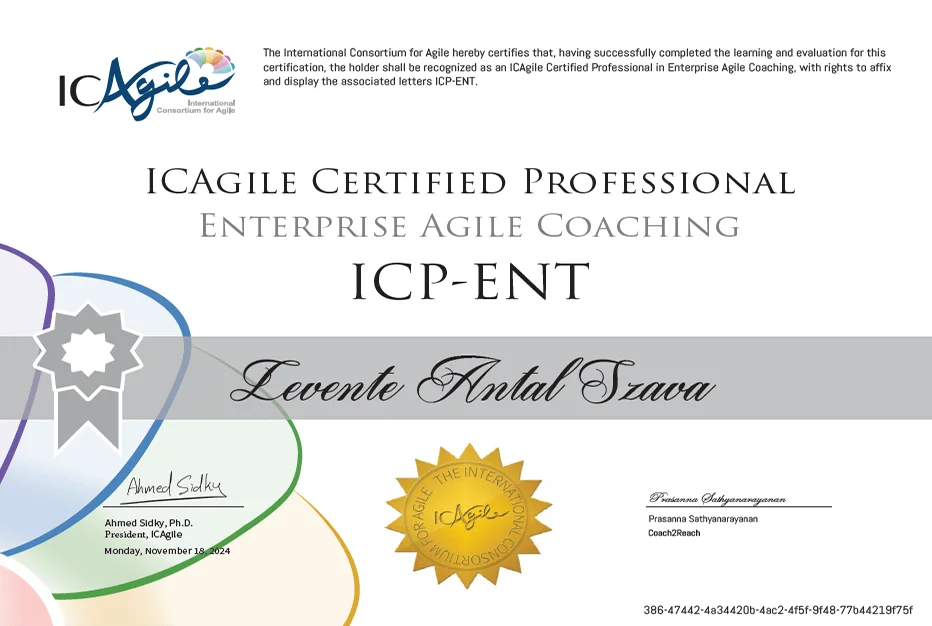Unraveling Persistent Performance Issues in Scrum Teams.
Root Causes and Actionable Solutions
Agile methodologies promise adaptability, enhanced collaboration, and continuous improvement. Yet, despite these promises, some Scrum teams struggle to maintain optimal performance. In scenarios where multiple Scrum teams exhibit performance issues, such as declining velocity and increasing internal conflicts, the involvement of an Agile Coach for over a half year or so without significant improvement warrants a deeper investigation. This article explores potential root causes and outlines actionable solutions for addressing these challenges.
Potential Root Causes
1. Misalignment of Organizational Culture and Agile Principles
Agile thrives in environments where its principles are supported by the organization’s culture. A misalignment here can manifest as resistance to change, insufficient support from leadership, or a lack of understanding of Agile values across the organization.
Symptoms:
- Frequent disruptions from external stakeholders.
- Teams adhering to old hierarchical structures.
- Lack of psychological safety leading to superficial compliance.
Recommended Actions:
- Leadership: Conduct workshops to align leadership and organizational goals with Agile principles.
- Agile Coach: Foster an environment of open communication and psychological safety.
2. Ineffective Agile Coaching
While an Agile Coach plays a pivotal role in guiding teams, ineffective coaching can lead to stagnation. This could stem from the coach’s inability to adapt their approach to the team’s needs or insufficient engagement.
Symptoms:
- Teams exhibit minimal improvement despite ongoing coaching.
- One-size-fits-all coaching methods.
- Lack of tailored strategies to address team-specific challenges.
Recommended Actions:
- Leadership: Evaluate the coach’s performance and methods through feedback from teams.
- Agile Coach: Engage in continuous learning and seek mentorship or peer reviews to refine coaching techniques.
3. Inadequate Scrum Master Support
Scrum Masters are critical in removing impediments and facilitating the Scrum process. If Scrum Masters are not effectively trained or empowered, teams may struggle with self-organization and face persistent roadblocks.
Symptoms:
- Frequent impediments remain unresolved.
- Teams are overly dependent on the Scrum Master or Agile Coach.
- Miscommunication or conflict resolution issues.
Recommended Actions:
- Leadership: Provide additional training and resources for Scrum Masters.
- Agile Coach: Mentor Scrum Masters, focusing on empowerment and facilitation skills.
4. Team Dynamics and Composition Issues
Team performance can be significantly impacted by interpersonal conflicts, unclear roles, or lack of commitment.
Symptoms:
- High levels of conflict or disengagement.
- Inconsistent participation in Scrum ceremonies.
- Role confusion leading to inefficiencies.
Recommended Actions:
- Leadership: Reassess team compositions to ensure complementary skill sets and balanced dynamics.
- Scrum Masters: Facilitate team-building activities and clarify roles and expectations.
- Agile Coach: Mediate conflicts and promote a culture of accountability and trust.
5. Unrealistic Expectations and Workloads
Excessive pressure to deliver can lead to burnout, cutting corners, and reduced team morale.
Symptoms:
- Constantly missed deadlines and sprint goals.
- High turnover rates or absenteeism.
- Declining quality of deliverables.
Recommended Actions:
- Leadership: Reevaluate project scopes and timelines, ensuring they are realistic.
- Scrum Masters: Monitor team health and workload, raising concerns proactively.
- Agile Coach: Advocate for sustainable practices and educate stakeholders on Agile principles.
6. Insufficient Feedback and Continuous Improvement
A key tenet of Agile is continuous improvement, driven by regular feedback. If teams are not engaging in effective retrospectives or if feedback loops are missing, improvement will stall.
Symptoms:
- Repeated issues with no visible action or improvement.
- Low engagement in retrospectives.
- Lack of clear action items from retrospective meetings.
Recommended Actions:
- Scrum Masters: Enhance retrospective sessions to be more engaging and actionable.
- Agile Coach: Train teams in effective feedback practices and ensure follow-through on improvement actions.
7. Unnecessary Micromanagement by the Agile Coach
While the Agile Coach is meant to guide and support, excessive micromanagement can hinder team autonomy, fostering dependency and weakening decision-making abilities within the team.
Symptoms:
- Teams relying heavily on the Agile Coach for decisions.
- Reduced confidence and initiative among team members.
- Delays in decision-making due to constant coach intervention.
Recommended Actions:
- Leadership: Set clear boundaries and expectations for the Agile Coach’s role.
- Agile Coach: Shift focus from micromanaging to empowering teams, encouraging self-organization and autonomy.
- Scrum Masters: Support teams in building confidence and decision-making capabilities.
Performance issues within multiple Scrum teams under the same Agile Coach’s guidance require a thorough examination of potential root causes. From organizational misalignment to ineffective coaching, each scenario demands targeted actions by leadership, Scrum Masters, and the Agile Coach. By addressing these root causes with the recommended actions, teams can realign with Agile principles and achieve sustained improvement.
To foster long-term success, continuous evaluation and adaptation of coaching practices, coupled with strong leadership support, are essential. Only through a collaborative and committed effort can these challenges be transformed into opportunities for growth and excellence.
Share on


